Search intent is the key to creating content your audience absolutely loves. You may think you’ve already got this covered by targeting certain key phrases, but keyword research alone doesn’t reveal one important aspect – the “why”.
Why is your audience interested in that particular keyword or phrase? What are they hoping to achieve?
The answer to that is search intent. Once you’ve figured out the intention behind search queries, you can better serve the people interested in your content. And that might just be your way to not only higher rankings, but increased traffic and leads.
To help you make that happen, in this post, we’ll take you through what search intent is, how it works and how to make the most of it.
What is Search Intent?
When a user types in a query, what do they really want? Do they want to compare products or services, learn more about a topic or find practical solutions on a subject? What is their ultimate goal?
For instance, if a user types in “photography,” this could mean many things:
- They may be looking for photography lessons
- They could be searching for a photographer for an upcoming event
- Maybe they want to purchase photography equipment
There are so many possibilities to what a user might want and Google’s job is to interpret this query and then return results that fit that desire. However, how do they do that with 3.5 billion searches per day?
Google Gets Some Help from RankBrain
RankBrain was introduced in 2015 and is a machine learning algorithm that helps Google sort search queries and return the most relevant results. To be able to fully grasp the significance of this technology, let’s have a look at how Google’s algorithm used to work.
Even though the search engine has been around for a long time, 15% of daily search queries are inquiries Google has never seen before. That’s around 500 million!
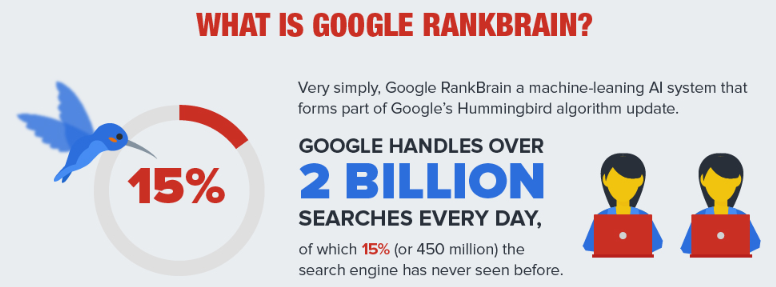
In the past, the search engine would examine webpages, try to find keyword matches and give results mostly based on that. However, this doesn’t always yield the most relevant results, especially in terms of search intent. In order to improve that and make searches more targeted – that’s where RankBrain comes in.
The algorithm examines search results in context based on factors such as past search queries, location, and the combination of words. It is then able to better provide search results that meet the intent behind the queries.
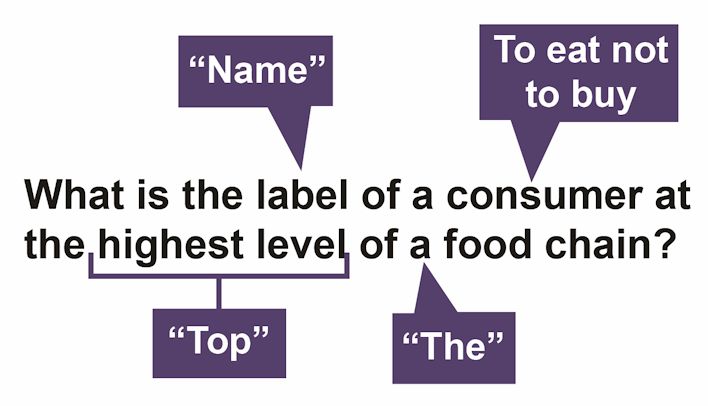
In addition, RankBrain also tracks user interaction with the results to check if they were satisfactory.
There are times, however, where one word can have several meanings. For instance, “pool” can either be a swimming pool or the game where you shoot multi-colored balls. How does the search engine handle that?
The 3 Ways to Interpret Search Queries
When a word or phrase has multiple meanings, there are three different interpretations that help Google decide on how to handle such a query.
- Dominant interpretation – What most people mean when they type in that query.
- Common interpretation – What a lot of people mean when performing this search.
- Minor interpretation – What very few people are looking for.
You can also find this information in Google’s search quality rating guidelines. Put into practice using the “photography” example from earlier, you would have interpretations like this:
- Dominant interpretation – Searching for photography tips/techniques.
- Common interpretation – Trying to find photography studios or photography equipment. (There can be more than one “common interpretation”. If this occurs, Google will return results that reflect both interpretations.)
- Minor Interpretation – The user wants to learn more about the history of photography
From here, the search engine then tries to figure out what the intent is behind the query
- Transactional
- Commercial
- Navigational
- Informational
Let’s look at these in detail.
4 Types of Search Intent That Impact Results
Here’s what the different types of search intent mean and what kind of results they yield.
1. Transactional Intent
Transactional queries come from users who are interested in doing something or taking action – like making a purchase. The common keywords connected to transactional queries are “buy,” “purchase,” “quote,” “discount,” “subscribe,” “how much, etc.
Examples:
- Best price for iPhone X
- How much is an iPhone charger?
- Quote for iPhone accessories
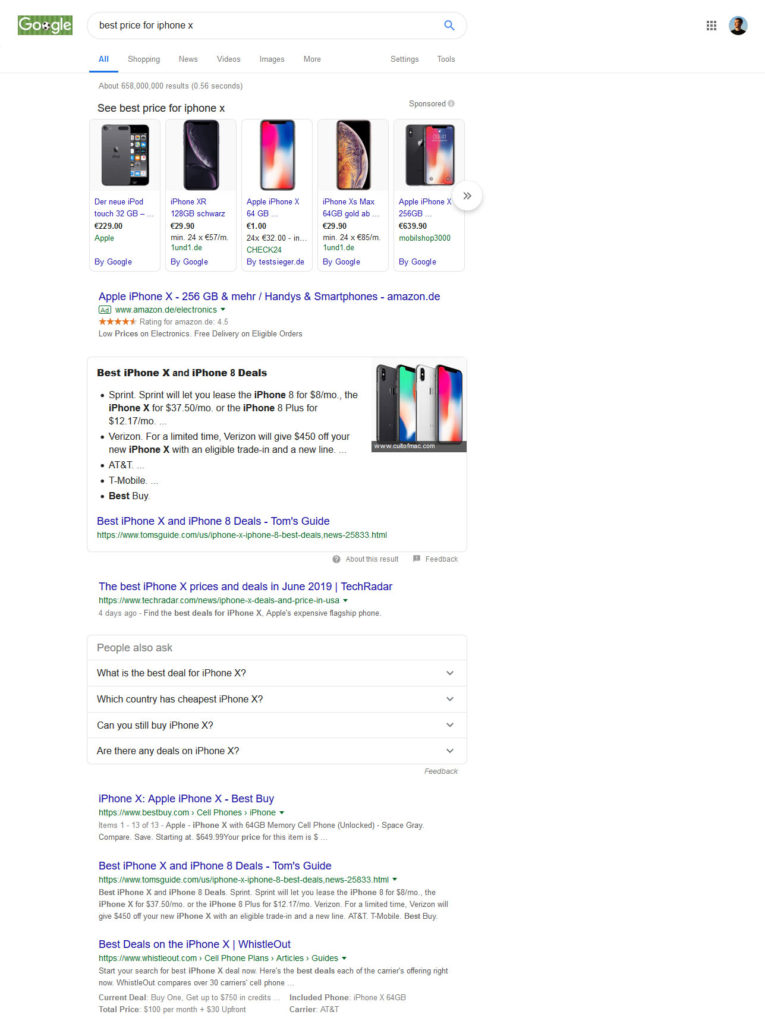
See the search results above for the term “best price for iPhone X”. All of them are shopping-related because Google understands the transactional intent.
Local searches are also often part of transactional intent. Half of consumers who search locally end up visiting a store on the same day. Typical local search queries include:
- iPhone X Manhattan
- Apple store near me
2. Commercial Intent
This is related to transactional intent, but it differs because it describes users who are interested in products or services but not necessarily purchasing them right then. Queries with commercial intent typically happen during the research phase.
For instance, a user’s phone contract might soon come to an end. They had an iPhone before but are also curious about the new Samsung. To help them decide which one to buy next, they’ll put something like “apple vs samsung comparison” into the search engine.
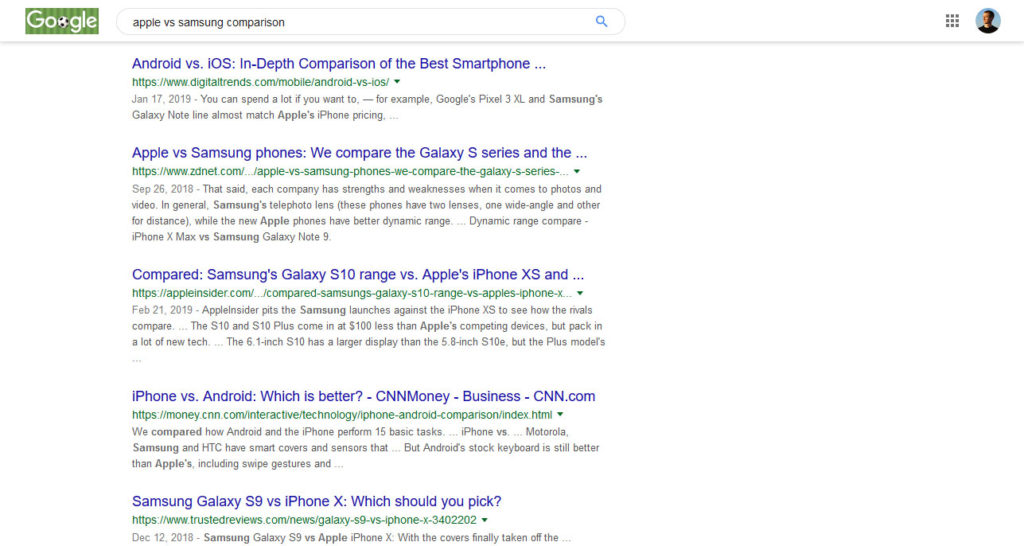
As you can see this turns up reviews and comparisons of the two different brands. Google correctly recognized the commercial intent and provided fitting results including specs and prices.
3. Navigational Intent
Users use navigational queries when they are looking for a specific website or webpage. Instead of typing the URL into their browser, which can be time-consuming, they enter the name of the company or brand in the search field. Examples are “Facebook,” “Gmail,” or “YouTube”.
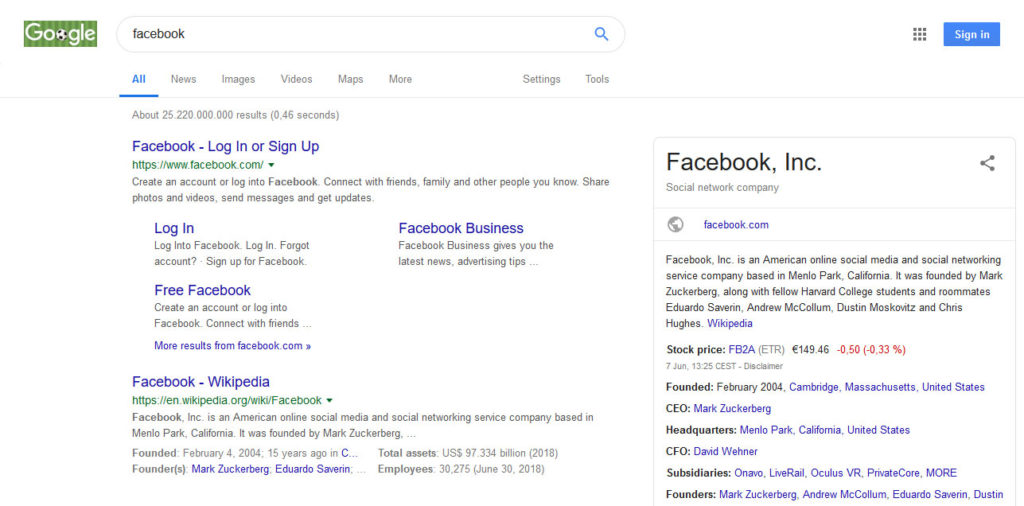
The top result is the site’s homepage because the search engine recognized this as a navigational intent query. People who mainly surf the web in this manner also send image attachments inside Word documents.
4. Informational Intent
These are users who want to know more about a particular topic. Examples:
- How many websites are there on the Internet?
- What’s the largest planet?
- Why do dogs chase their tails?
Below are the results for “why do dogs chase their tails”. Google recognizes this as a query with informational intent so all the results are blog posts or articles that answer this question.
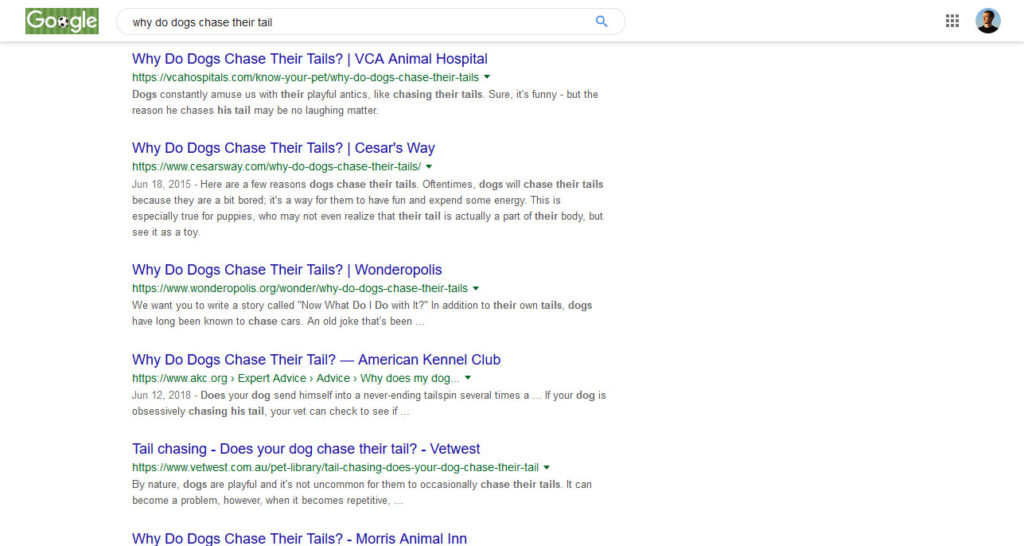
How to Optimize Your Website with Search Intent in Mind
Now that we’ve discussed how important search intent is for rankings, let’s get into how to take advantage of it.
1. Study the Highest-Ranking Pages
Checking Google’s search results will give you clarity on the user intent behind any search term. The entries reflect what the search engine deemed most fitting for each instance.
For example, if you want to rank for “stock trading,” below is what you will find when entering the term into the search engine.
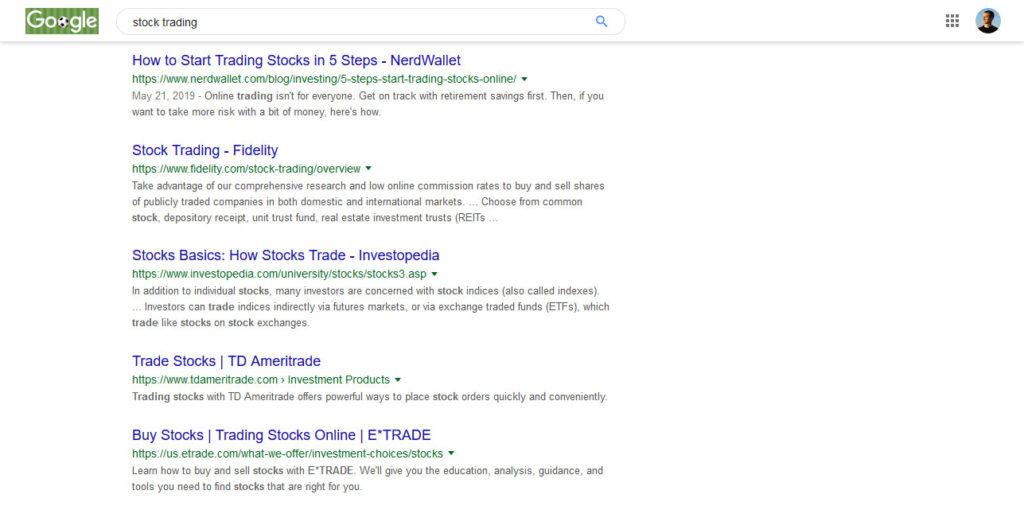
As you can see, the top results for this term are all informational, except for some that also cover commercial intent.
This highlights that most people who search for this term want to learn more about it instead of taking an action. If this is what people’s intentions are, then creating content such as blog posts and how-to-guides for beginners is your best option.
2. Note the Questions Section
“People also ask” is a section that can help you to further understand user intent.
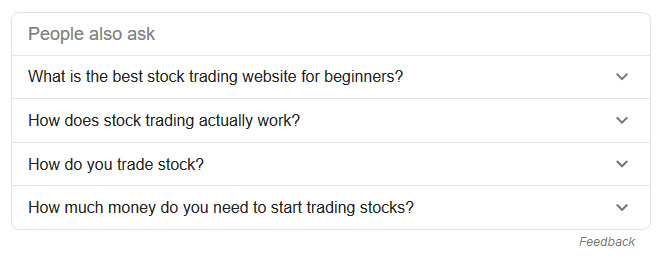
These are questions often asked in relation to the search term. If you want to be helpful to your audience, you’d do well to answer them in your articles, blog posts or pages.
3. Pay Attention to Different Content Types
Let’s have a look at another keyword – “wordpress tutorial”.
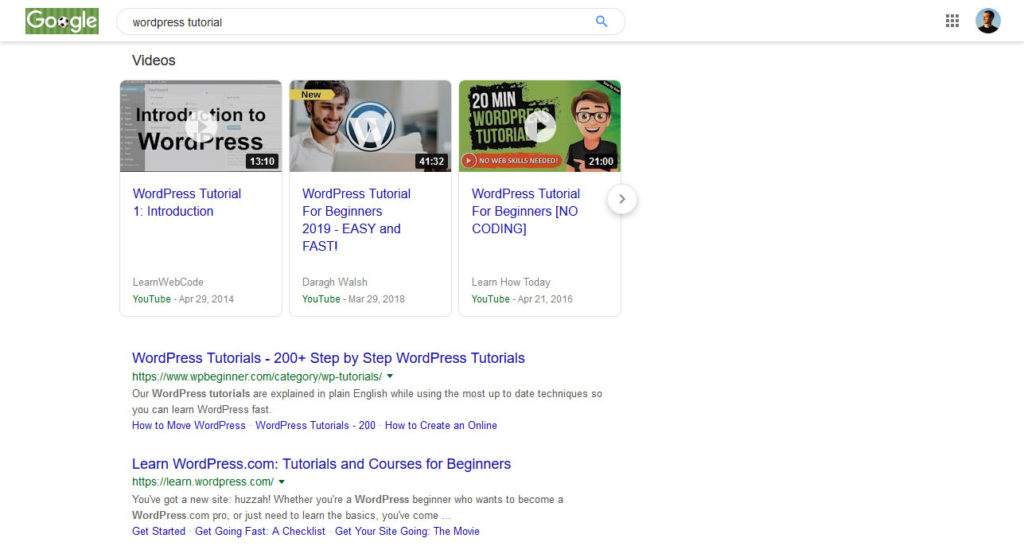
This one’s interesting because a lot of videos appear at the top of the page. Blog posts and articles only appear below them. This highlights two things:
- People who use this keyword are interested in video tutorials
- WordPress tutorials are mostly sought after by beginners
What can you learn from this? If you want a chance of ranking for the term “wordpress tutorial,” creating a beginner video tutorial is a good idea. This approach applies to other content types as well.
4. Collect Keywords
When creating your content, it’s important to note that your website needs to cater to different types of search intent. Doing so will help your conversions as you are able to meet the needs of your target audience at different stages of the buyer journey.
The first step in this journey is to figure out your keywords. For example, if you sell nursery furniture, your search terms maybe something like this:
- nursery furniture
- nursery furniture sets
- baby nursery furniture sets
- affordable nursery furniture sets
- modern nursery furniture
- what furniture do you need in a nursery?
- what is a convertible crib?
- what is the best kind of changing table?
- when should I start setting up the baby nursery?
- baby nursery furniture price comparisons
5. Order Keywords by Search Intent
Once you have a list like that, it’s time to sort the entries by type of search intent:
- Transactional
- baby nursery furniture price comparisons
- affordable nursery furniture sets
- Commercial
- nursery furniture
- nursery furniture sets
- baby nursery furniture sets
- modern nursery furniture
- Informational
- what furniture do you need in a nursery?
- what is a convertible crib?
- what is the best kind of changing table?
- when should I start setting up the baby nursery?
6. Use Keywords in the Right Places
Once you have all of that, it’s time to create fresh content or update existing posts and pages so they meet the search intent. However, make sure to use the right types of keywords in the right places. Here’s how to best do that:
- Transactional – You can use those keywords to create or update your landing pages and sales pages
- Commercial – These types of keywords can be a part of your product pages
- Informational – Use these keywords in your blog posts, articles, how-to guides, and other informational content
Where exactly should you place those keywords and phrases? That is a question for on-page SEO.
Final Thoughts: Search Intent
When trying to create content for your audience, it’s important to pay attention to what they want. One of the best ways to do so is to match their search intent. Doing so helps improve your rankings and attract clicks, leads, and sales.
Above, you have learned what search intent is all about. You now know what it is, how Google approaches search intent and also how you can optimize your web pages so that they fit your searchers’ motivation.
Together with proper keyword research and optimization, this can catapult your pages to new heights.
How do you integrate search intent into your SEO strategy? Any additional tips? Let us know in the comments section below.
The post Search Intent: How to Effectively Use it for Your Business appeared first on Torque.
